The hungry ghosts of Tibetan Buddhism, depicted with small mouths and huge stomachs, are never satisfied no matter how much they eat.
Author's note: This writing is part of my Ethical Jewelry Exposé: Lies, Damn Lies, and Conflict Free Diamonds—a 45,000 word investigation into the dark underbelly of the jewelry industry organized by the metaphor of layered Russian nesting dolls. This section explores how the historical origins of the current neocolonial practices of the Responsible Jewellery Council can be traced back in history to the origin of early globalism and modernism.
—Marc Choyt
Over my twenty-two years in the jewelry business, I’ve developed friendships with insiders who have huge networks and are global experts in their fields. Two stories, told in confidence, stick out.
One told me of being on a board of a large mining company, where artic Indigenous people (who the company was there to “help”) were being referred to as “tundra n——.”
The other individual told me of a conversation that took place on a flight while sitting next to the CEO of a gemstone company widely revered as an excellent source by ethical jewelers. The CEO extolled views of workers straight out of apartheid South Africa, circa 1948: hire miners known to have AIDS, because they are more easily disposable.
Countless jewelers could consider these abhorrent sentiments outlying aberrations, as attitudes merely lodged in past generations, popping their ugly heads out of the jack in the box of time.
Yet just consider once again that diamonteers who purchased blood/conflict diamonds were complicit merchants who allowed the funding of these wars for…twenty years?
To justify ecocide and human rights atrocities, you have to portray them as something “other” and “inferior” to what you are.
The New York Times article we explored earlier, "Controversy Over Diamonds Made Into A Virtue by De Beers," is certainly illustrative of an attitude toward the lives of producer communities as having only one value: to increase profits.
The London Mining Network’s exposé on Rio Tinto reports that “Rio Tinto viewed the people of Bougainville as inferior due to their colour and culture and, therefore, intentionally violated their rights.” As part of its discriminatory treatment of the local people, the company allegedly paid “slave wages” to black workers.
Yet what happened in the past does not matter.
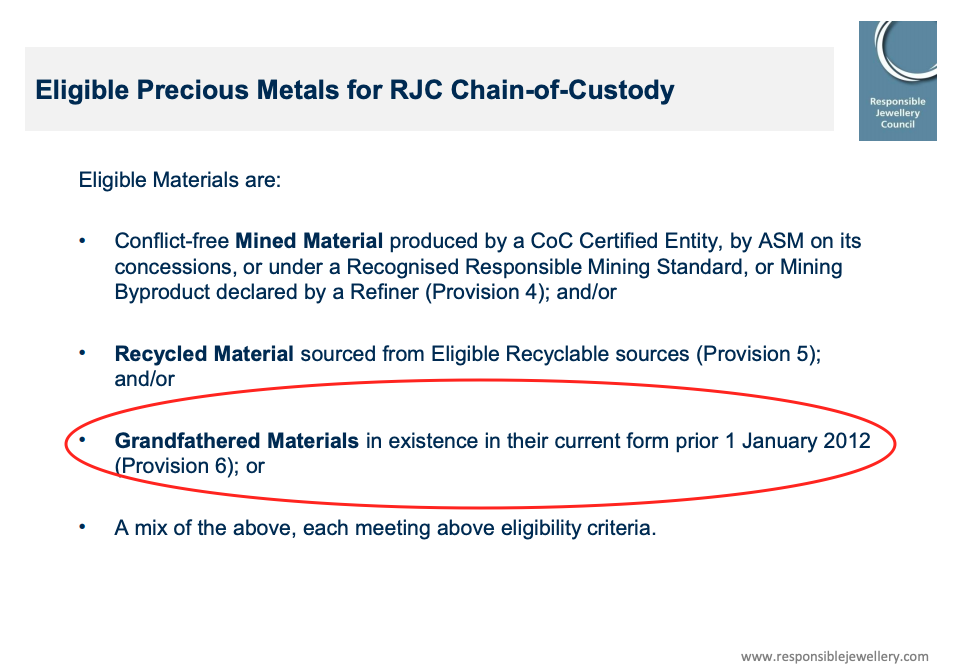
Everything in the past is absolved in one easy statement, The Responsible Jewellery Council’s Grandfather Clause.
The past is to be forgotten. Forgetting then becomes a cover up for atrocities hidden in plain sight.
After forgetting, the next step is the politically-correct framing, the large-scale “sustainable mining” narratives, created in a seamless continuity in the service of neocolonial business practices.
A collective amnesia sets in, birthing a consensus trance. The 3.7 million killed in wars funded by diamond purchases do not matter.
But let us be clear: they do not matter because they are not white Europeans, because they are merely rural tribal Indigenous people, because—and only because—in the core of the Russian doll, the truth is that:
INDIGENOUS AND BLACK AFRICAN LIVES DON’T MATTER.
The monotheistic worship of capital does not discriminate. Brown, Asian, Indigenous or any lives that attempt to impede the resource to trash to cash economic model do not matter.
Forgetting the past is part of the religion of these multinationals. It enables them to build narratives of neoliberal promise, of progress through multinational economic development—and of course, jobs.
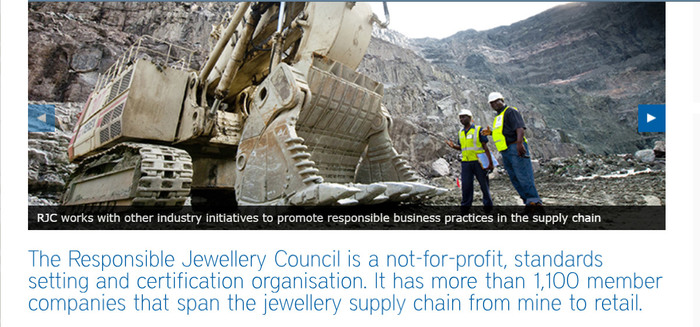
(Screen shot from the Responsible Jewellery Council’s website, 2018.)
The Natives are going to be saved by the promise of a better life! But to do this, they must first give up their farmland, clean water, and intact traditional communities.
Ironically, this very desperation ideally to be relieved is usually the result of the historical trauma of colonialism—a root causes of poverty which the multinational neocolonial companies now offer to solve.
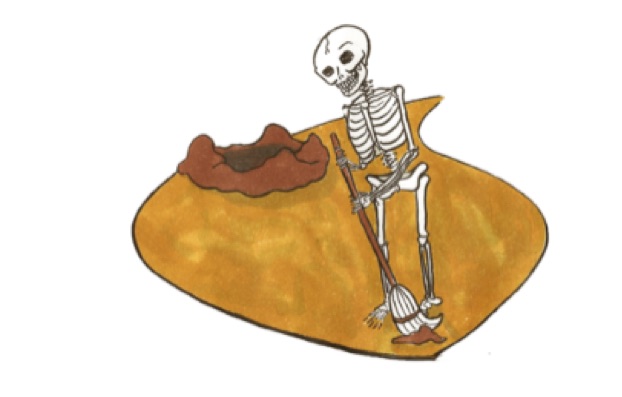
In my youth in the ‘80s, I spent two years in Haiti as a volunteer, working in Mother Teresa’s clinics with the poorest of the poor. I also witnessed everything from microloans to large-scale infrastructure projects. Jobs are important.
But mining is never a sustainable activity—and particularly large-scale mining—driving profits to shareholders, exporting the wealth on the land, creating a sacrifice zone, a resource curse, bankrupting the natural capital of culture and place.
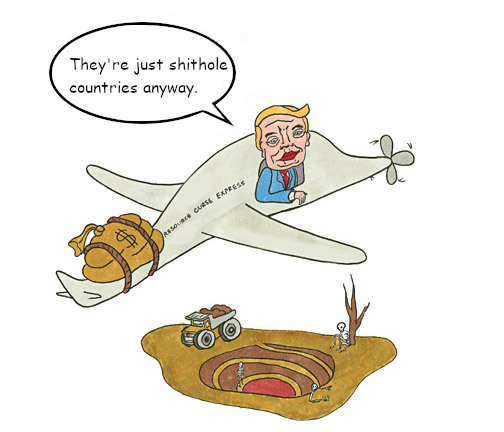
Of course, these companies are far smarter now than to call people members of “shithole countries.” You are not going to see cross burning on their front lawn. White nationalism is buried deep—seamlessly incorporated in edifices of their economic practices.
They have devised clever means to make us believe that they care by supporting small projects that pose no threat to their “business as usual,” yet have tremendous publicity value.
[Not unrelated, see my criticism of "ethical jewelry" leader Brilliant Earth in the Eighth Russian Doll.]
Bigotry is hidden behind the rhetoric of jobs and development—as well as a consumer-facing “ethical jewelry” narrative that lullabies the latent, potentially transformative energy in the market into a deep slumber. Which leads us now to the figure at the center of the Russian doll...
A great sea within a shell, an infinite space and a ship birthing itself in history.
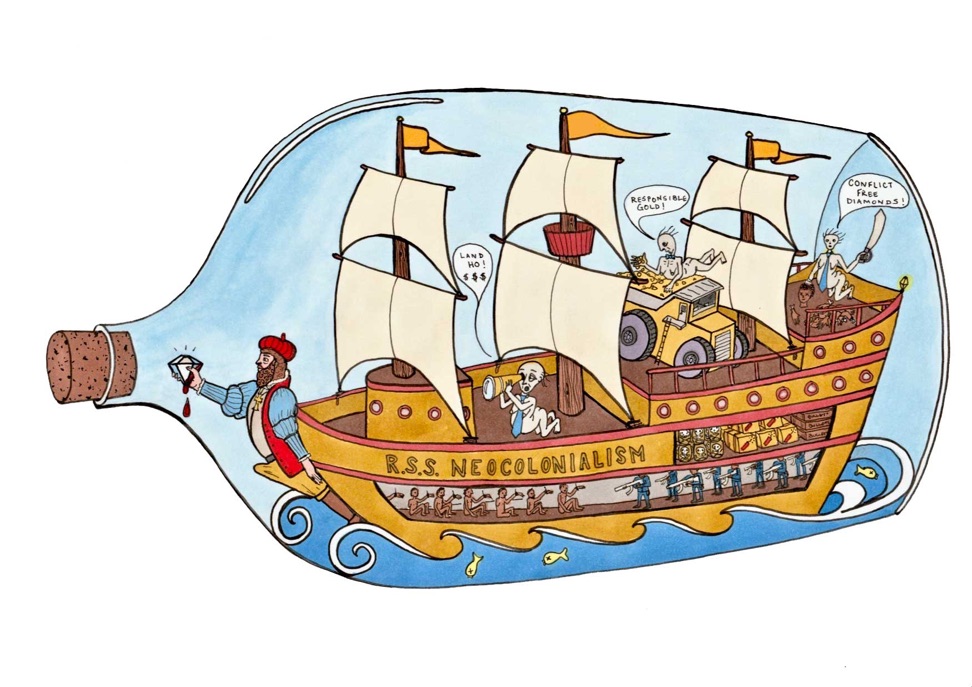
The extraction of resources, apartheid, colonialism, the slave trade, can be traced back to the voyages of the early explorers, the beginning of early modernism—the Portuguese slave traders in search of gold in the 15th and 16th centuries. The Portuguese were responsible for 75% of the slave trade that built the early economy of the US.
The modern-day version of Vasco da Gama wears a business suit and works as the CEO of a multinational large-scale mining company. He strolls about a United Nations conference, extolling the virtues of his ethical chain of custody approach.
Da Gama sought slaves; large-scale mining seeks cheap local labor. Da Gama sought to enrich his country. The CEO seeks to enrich his shareholders. Da Gama justified actions based upon Christianity; multinationals justify their actions on the religion of neo-liberalism.
Yet the arc of historical continuity is continuous in its net effects: the destruction of tribal culture, the transformation of ecosystems into wastelands, the ongoing march of resource to cash to trash hidden by the mask of neoliberalism is our status quo.
Indeed, we now have an answer to my original question:
Millions of people died in diamond wars…zero restitution, truth, or reconciliation...mercury poisoning from gold mines…in the name of love symbols. Why?
The simple truth is: a toxic mix of greed, racism, and neocolonial business practices.
“Conflict free” was created by those who believe that we can just walk away from any history—the atrocities toward communities, the policies of ecocide.
“Conflict free” is the perfect expression of institutionalized racism woven into the fabric of neoliberalism.
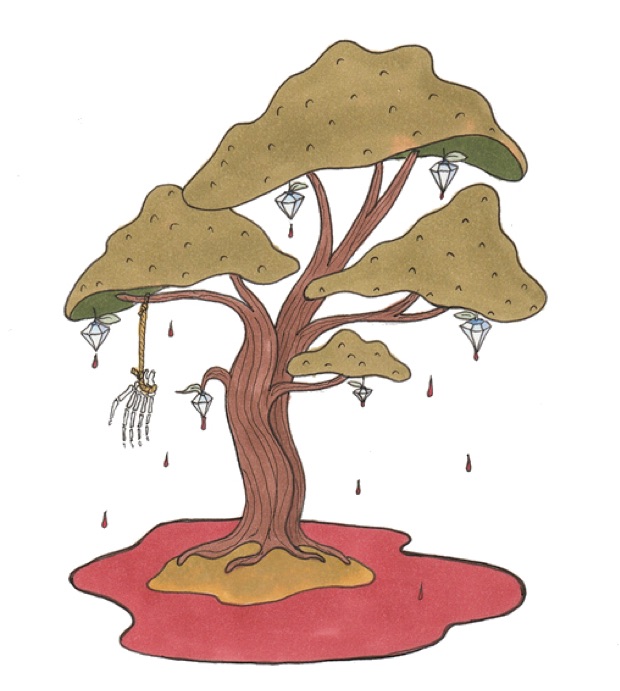
Blood on the leaves…Blood at the root… Diamonds swinging from trees in a southern breeze, a modern day strange fruit worn by millions of women to represent fidelity, love and commitment to family and community.
We are in this nefarious web, a toxic linear industrial model. It dehumanizes us. It separates us from others. It creates a monoculture that eats away at the very life support systems that we need.
How are we to survive the anthropogenic epoch, the sixth great extinction?
What’s our five-hundred-year plan for our children and our children’s children?
It starts with changes to the structures which dehumanize and threaten us. “True compassion is more than flinging a coin to a beggar; it comes to see that an edifice which produces beggars needs restructuring,” said Dr. Martin Luther King Jr.
We can fight the power structure directly, we can boycott, we can use every means possible to align our heartfelt values with our economic choices. We can focus on economic inequality and build a market that will support producer communities.
But perhaps the greatest transformation will be with the recognition of our common humanity, an ethics that changes the neocolonial model, a call for truth, reconciliation and restitution. For this to happen, the producers themselves, those whose hands have been cut off in Sierra Leone diamond wars; the Indigenous people who have lost their home must be the guiding voice for change.
The perpetrators of atrocities and the victims must be brought together to forge a new path forward. Then, and only then, can we begin to have a global ethical responsibly jewelry story.
Our modern world, which quantifies and commoditizes our lives at the expense of our humanity, our relationship with the environment which sustains us, and the diversity of our cultures is perhaps the greatest expression of violence.
We need a true starting over place. The only question is, how much collective suffering must we create and endure before we find it and wake up.
Continue on to the Epilogue: Author's Personal Musings
Return to the Eighth Russian Doll: Brilliant Earth's Long, Tall Tale
Go to the Landing Page

**All writing and images are open source, under Creative Commons 3.0. Any reproduction of this material must back link to the landing page, here. For high resolution images for publication, contact us at expose(AT)reflectivejewelry.com.**